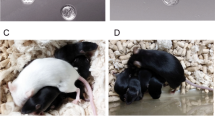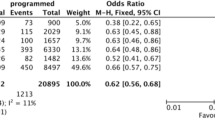Abstract
Up to now freeze-dried, gamma-sterilised or glycerol-preserved amniotic membranes (AMs) have widely been used in the field of ophthalmology and wound care (e.g. leg ulcers, burns). After some preservation processes in use, like freeze-drying or glycerol-preserving, the cells in the AM are no longer viable. Within this study we evaluated the influence of different short-term and long-term storage conditions on cell viability in AM. Therefore AMs from cesarean section placentae were washed and biopsied to evaluate the microbiological status and to determine the viability of the tissue. Additionally, viability under various storage conditions was examined by assessment of mitochondrial activity. Preservation included temperatures above and below 0°C as well as various media compositions. As expected, cell viability in amnion decreases during storage, in fact the effect was more pronounced when stored frozen, but the higher viability of amnion obtained by storage above 0°C with medium is associated with the limitation to a short period of storage of about 28 days. The evaluated preservation methods are the basis for future non-clinical in-vivo studies in which the possible benefit of amnion as a viable biomaterial in wound healing will be investigated.
Similar content being viewed by others
Abbreviations
- AM(s):
-
Amniotic membrane(s)
- DMEM:
-
Dulbecco’s modified eagle medium
- DMSO:
-
Dimethylsulfoxide
- FCS:
-
Fetal calf serum
- Ham’s F12:
-
Ham’s F12-medium
- HBV:
-
Hepatitis B virus
- HCV:
-
Hepatitis C virus
- HIV:
-
Human immunodeficiency virus
- HSA:
-
Human serum albumin
- L15:
-
Leibovitz’s L15-medium
- N2 :
-
Liquid nitrogen
- PBS:
-
Phosphate buffered saline
- RPMI:
-
RPMI 1640-medium
- RT:
-
Room temperature
References
Adinolfi M, Akle CA, McColl I, Fensom AH, Tansley L, Connolly P, Hsi BL, Faulk WP, Travers P, Bodmer WF (1982) Expression of HLA antigens, beta 2-microglobulin and enzymes by human amniotic epithelial cells. Nature 295:325–327
Akle CA, Adinolfi M, Welsh KI, Leibowitz S, McColl I (1981) Immunogenicity of human amniotic epithelial cells after transplantation into volunteers. Lancet 2:1003–1005
Arora M, Jaroudi KA, Hamilton CJ, Dayel F (1994) Controlled comparison of interceed and amniotic membrane graft in the prevention of postoperative adhesions in the rabbit uterine horn model. Eur J Obstet Gynecol Reprod Biol 55:179–182
Burger K (1937) Artificial vagina reconstruction with the help of amnion. Zentralblatt für Gynäkol 2437–2440
Burgos H, Faulk WP (1981) The maintenance of human amniotic membranes in culture. Br J Obstet Gynaecol 88:294–300
Davis JW (1910) Skin transplantation with a review of 550 cases at the Johns Hopkins Hospital. Johns Hopkins Med J 15:307–396
de Rotth A (1940) Plastic repair of conjunctival defects with fetal membranes. Arch Ophthalmol 23:522–525
Dhall K (1984) Amnion graft for treatment of congenital absence of the vagina. Br J Obstet Gynaecol 91:279–282
Dohrmann P, Fory R, Rupp K, Hamelmann H (1990) Animal experiment studies of amnion transplantation as peritoneal replacement. Langenbecks Arch Chir Suppl II:1055–1059
Dua HS, Azuara-Blanco A (1999) Amniotic membrane transplantation. Br J Ophthalmol 83:748–752
Dua HS, Gomes JA, King AJ, Maharajan VS (2004) The amniotic membrane in ophthalmology. Surv Ophthalmol 49:51–77
Faulk WP, Matthews R, Stevens PJ, Bennett JP, Burgos H, Hsi BL (1980) Human amnion as an adjunct in wound healing. Lancet 1:1156–1158
Gajiwala K, Gajiwala AL (2004) Evaluation of lyophilised, gamma-irradiated amnion as a biological dressing. Cell Tissue Banking 5:73–80
Ganatra MA, Durrani KM (1996) Method of obtaining and preparation of fresh human amniotic membrane for clinical use. J Pak Med Assoc 46:126–128
Ganatra MA (2003) Amniotic membrane in surgery. J Pak Med Assoc 53:29–32
Gomes JA, Romano A, Santos MS, Dua HS (2005) Amniotic membrane use in ophthalmology. Curr Opin Ophthalmol 16:233–240
Gruss JS, Jirsch DW (1978) Human amniotic membrane: a versatile wound dressing. Can Med Assoc J 118:1237–1246
Hao Y, Ma DH, Hwang DG, Kim WS, Zhang F (2000) Identification of antiangiogenic and anti-inflammatory proteins in human amniotic membrane. Cornea 19:348–352
He Q, Li Q, Chen B, Wang Z (2002) Repair of flexor tendon defects of rabbit with tissue engineering method. Chin J Traumatol 5:200–208
Kakishita K, Elwan MA, Nakao N, Itakura T, Sakuragawa N (2000) Human amniotic epithelial cells produce dopamine and survive after implantation into the striatum of a rat model of Parkinson’s disease: a potential source of donor for transplantation therapy. Exp Neurol 165:27–34
Kim JC, Tseng SC (1995) Transplantation of preserved human amniotic membrane for surface reconstruction in severely damaged rabbit corneas. Cornea 14:473–484
Koizumi NJ, Inatomi TJ, Sotozono CJ, Fullwood NJ, Quantock AJ, Kinoshita S (2000) Growth factor mRNA and protein in preserved human amniotic membrane. Curr Eye Res 20:173–177
Kruse FE, Joussen AM, Rohrschneider K, You L, Sinn B, Baumann J, Volcker HE (2000) Cryopreserved human amniotic membrane for ocular surface reconstruction. Graefes Arch Clin Exp Ophthalmol 238:68–75
Lee SH, Tseng SC (1997) Amniotic membrane transplantation for persistent epithelial defects with ulceration. Am J Ophthalmol 123:303–312
Marvin KW, Keelan JA, Eykholt RL, Sato TA, Mitchell MD (2002) Expression of angiogenic and neurotrophic factors in the human amnion and choriodecidua. Am J Obstet Gynecol 187:728–734
Mejia LF, Santamaria JP, Acosta C (2002) Symptomatic management of postoperative bullous keratopathy with nonpreserved human amniotic membrane. Cornea 21:342–345
Miki T, Lehmann T, Cai H, Stolz DB, Strom SC (2005) Stem cell characteristics of amniotic epithelial cells. Stem Cells 23:1549–1559
Mligiliche N, Endo K, Okamoto K, Fujimoto E, Ide C (2002) Extracellular matrix of human amnion manufactured into tubes as conduits for peripheral nerve regeneration. J␣Biomed Mater Res 63:591–600
Nakamura T, Yoshitani M, Rigby H, Fullwood NJ, Ito W, Inatomi T, Sotozono C, Nakamura T, Shimizu Y, Kinoshita S (2004) Sterilized, freeze-dried amniotic membrane: a useful substrate for ocular surface reconstruction. Invest Ophthalmol Vis Sci 45:93–99
Nisolle M, Donnez J (1992) Vaginoplasty using amniotic membranes in cases of vaginal agenesis or after vaginectomy. J Gynecol Surg 8:25–30
Rama P, Giannini R, Bruni A, Gatto C, Tiso R, Ponzin D (2001) Further evaluation of amniotic membrane banking for transplantation in ocular surface diseases. Cell Tissue Banking 2:155–163
Rennekampff HO, Dohrmann P, Fory R, Fandrich F (1994) Evaluation of amniotic membrane as adhesion prophylaxis in a novel surgical gastroschisis model. J Invest Surg 7:187–193
Sakuragawa N, Thangavel R, Mizuguchi M, Hirasawa M, Kamo I (1996) Expression of markers for both neuronal and glial cells in human amniotic epithelial cells. Neurosci Lett 209:9–12
Sabella W (1913) Use of fetal membranes in skin grafting. Med Rec NY 83:478–480
Sangwan VS, Vemuganti GK, Iftekhar G, Bansal AK, Rao GN (2003) Use of autologous cultured limbal and conjunctival epithelium in a patient with severe bilateral ocular surface disease induced by acid injury: a case report of unique application. Cornea 22:478–481
Singh R, Gupta P Kumar P, Kumar A, Chacharkar MP (2003) Properties of Air Dried Radiation Processed Amniotic Membranes under Different Storage Conditions. Cell Tissue Banking 4:95–100
Stern W (1913) The grafting of preserved amniotic membrane to burned and ulcerated skin. JAMA 13:973–974
Subrahmanyam M (1995) Amniotic membrane as a cover for microskin grafts. Br J Plast Surg 48:477–478
Szabo A, Haj M, Waxsman I, Eitan A (2000) Evaluation of seprafilm and amniotic membrane as adhesion prophylaxis in mesh repair of abdominal wall hernia in rats. Eur Surg Res 32:125–128
Takashima S, Ise H, Zhao P, Akaike T, Nikaido T (2004) Human amniotic epithelial cells possess hepatocyte-like characteristics and functions. Cell Struct Funct 29:73–84
Tosi GM, Massaro-Giordano M, Caporossi A, Toti P (2005) Amniotic membrane transplantation in ocular surface disorders. J Cell Physiol 202:849–851
Trelford JD, Trelford-Sauder M (1979) The amnion in surgery, past and present. Am J Obstet Gynecol 134:833–845
Tseng SC, Prabhasawat P, Lee SH (1997) Amniotic membrane transplantation for conjunctival surface reconstruction. Am J Ophthalmol 124:765–774
van der Linden PJ, de Goeij AF, Dunselman GA, Erkens HW, Evers JL (1998) Amniotic membrane as an in vitro model for endometrium-extracellular matrix interactions. Gynecol Obstet Invest 45:7–11
van Herendael BJ, Oberti C, Brosens I (1978) Microanatomy of the human amniotic membranes. A light microscopic, transmission, and scanning electron microscopic study. Am J Obstet Gynecol 131:872–880
Ward DJ, Bennett JP, Burgos H, Fabre J (1989) The healing of chronic venous leg ulcers with prepared human amnion. Br J Plast Surg 42:463–467
Wei JP, Zhang TS, Kawa S, Aizawa T, Ota M, Akaike T, Kato K, Konishi I, Nikaido T (2003a) Human amnion-isolated cells normalize blood glucose in streptozotocin-induced diabetic mice. Cell Transplant 12:545–552
Wei JP, Nawata M, Wakitani S, Ota M, Konishi I, Nikaido T (2003b) Human amniotic mesenchymal cells differentiate into chondrocyte. presented at Keystone Symposium, From Stem Cells to Therapy” in Steamboat Springs in March 2003
Yan G, Su Y, Ai G (2004) Study on human amniotic membrane loaded with marrow mesenchymal stem cells and epidermis cells in promoting healing of wound combined with radiation injury. Zhongguo Xiu Fu Chong Jian Wai Ke Za Zhi 18:497–501
Young RL, Cota J, Zund G, Mason BA, Wheeler JM (1991) The use of an amniotic membrane graft to prevent postoperative adhesions. Fertil Steril 55:624–628
Zhao P, Ise H, Hongo M, Ota M, Konishi I, Nikaido T (2005) Human amniotic mesenchymal cells have some characteristics of cardiomyocytes. Transplantation 79:528–535
Zohar Y, Talmi YP, Finkelstein Y, Shvili Y, Sadov R, Laurian N (1987) Use of human amniotic membrane in otolaryngologic practice. Laryngoscope 97:978–980
Acknowledgements
We wish to thank the Women’s Hospital of Upper Austria ‘Landes-Frauen- und Kinderklink Linz’ for their assistance in amniotic membrane procurement.
Author information
Authors and Affiliations
Corresponding author
Additional information
A part of this work was presented at the World Congress on Tissue Banking in Rio in May 2005 and was honoured by the Poster Award Commission.
Rights and permissions
About this article
Cite this article
Hennerbichler, S., Reichl, B., Pleiner, D. et al. The influence of various storage conditions on cell viability in amniotic membrane. Cell Tissue Banking 8, 1–8 (2007). https://doi.org/10.1007/s10561-006-9002-3
Received:
Accepted:
Published:
Issue Date:
DOI: https://doi.org/10.1007/s10561-006-9002-3




